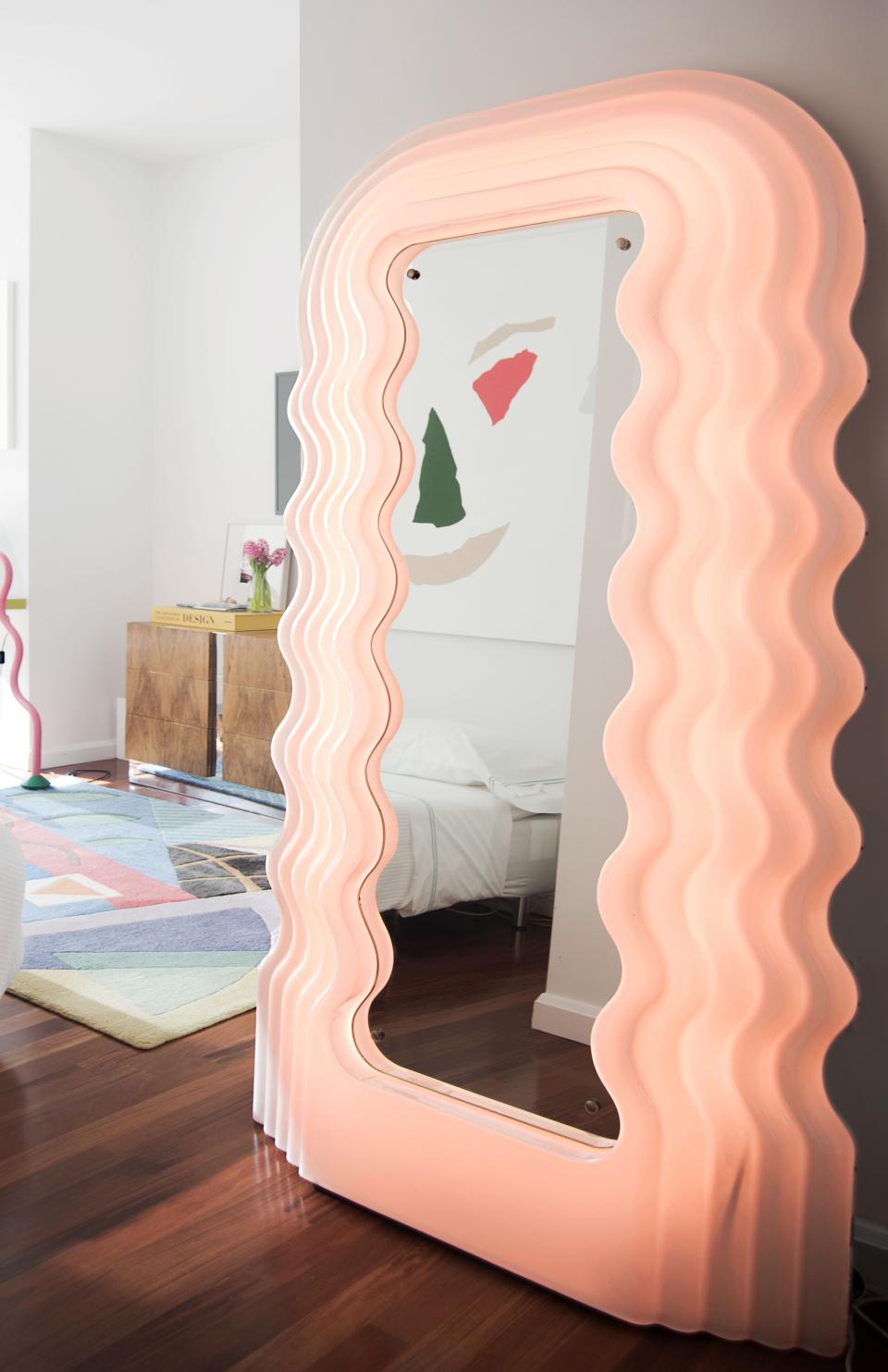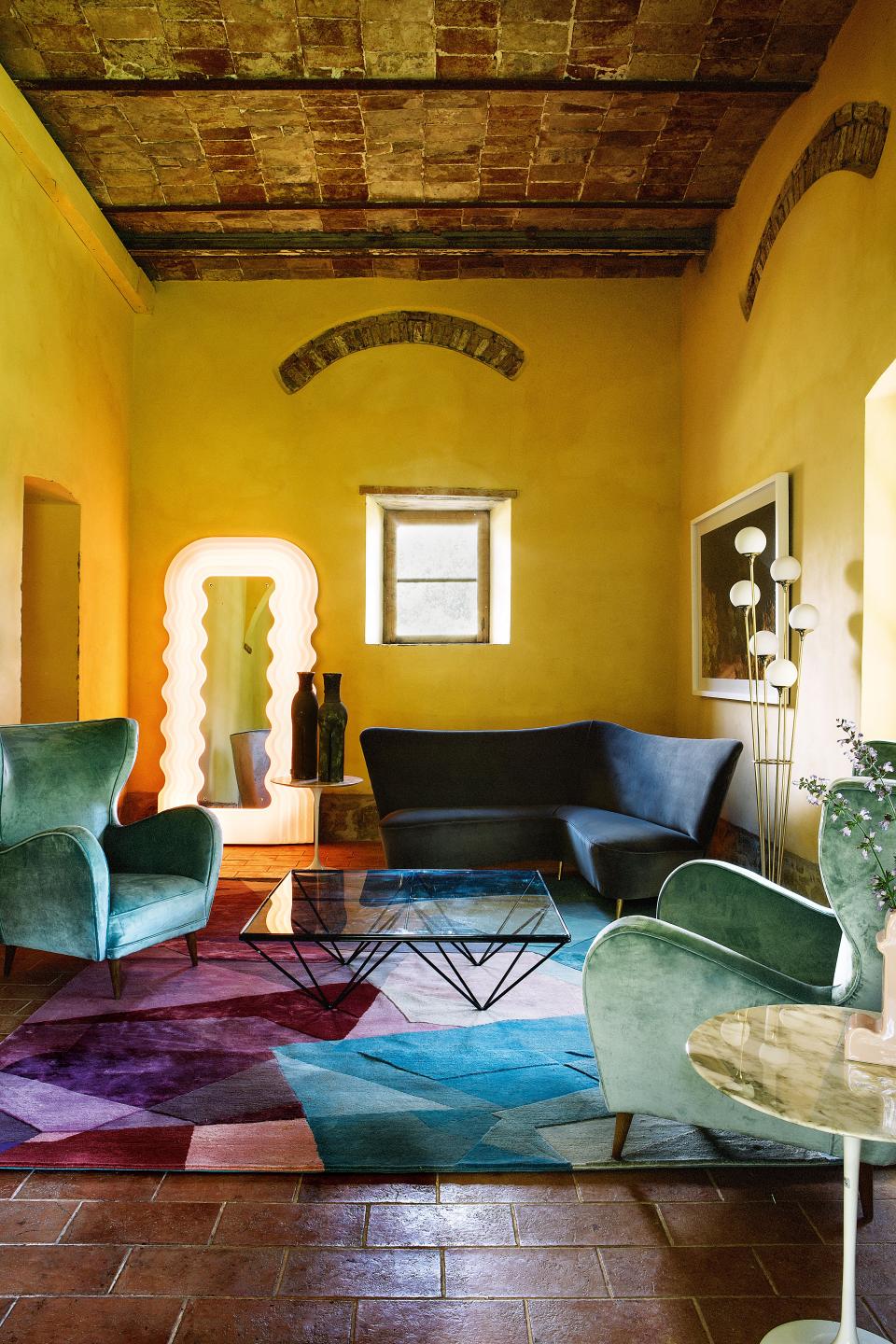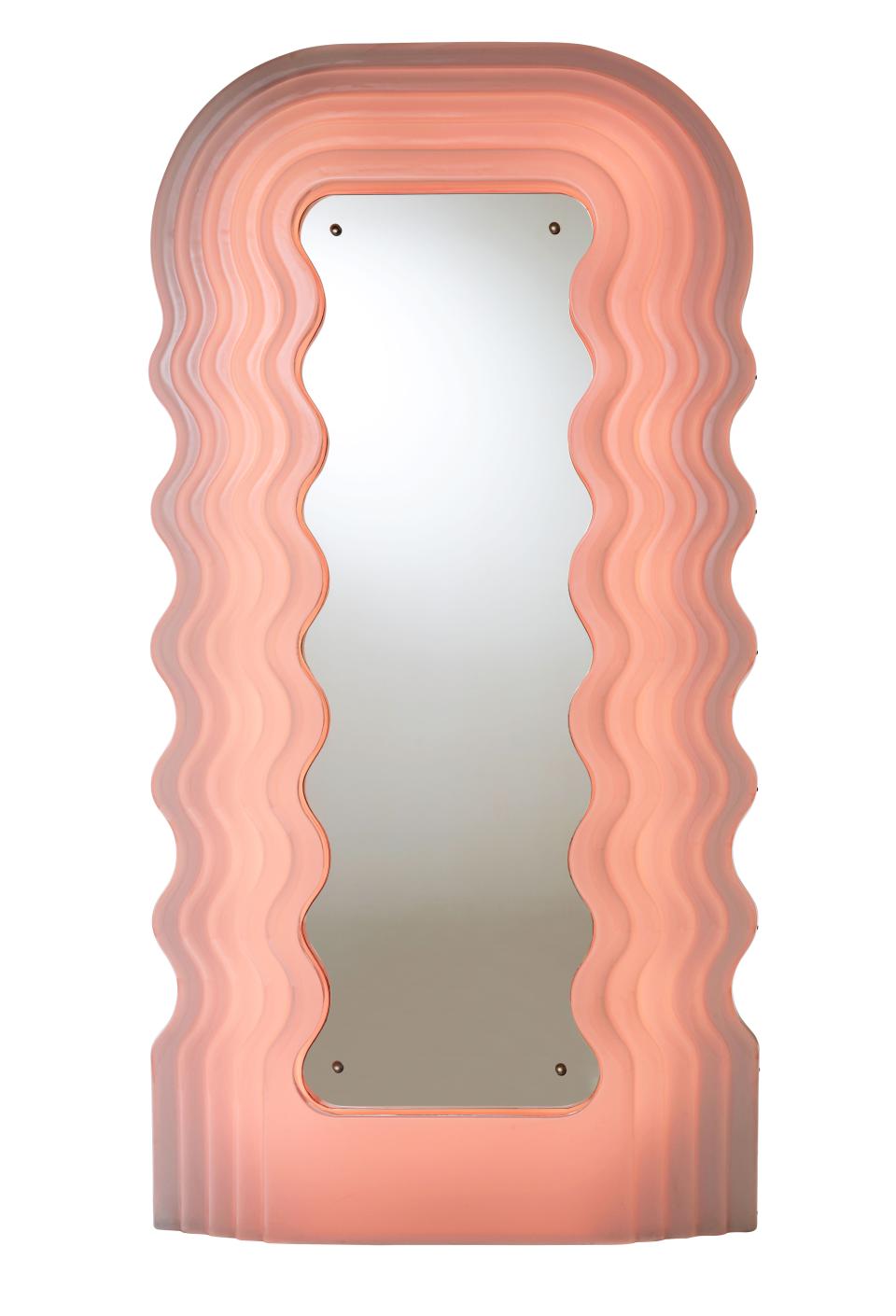Look into the Ettore Sottsass Mirror that Gets Style-Setters Preening
At Milan’s Eurodomus 3 trade show in 1970, Florentine manufacturer Poltronova unveiled Mobili Grigi, a far-out bedroom collection that had been designed by architect Ettore Sottsass. Fashioned from slick, vacuum-molded plastic and cast fiberglass, it was part of the brand’s mission to bring novel industrial materials—which had already revolutionized nautical and automobile design—into the home. The radical range was produced in a very limited edition, with one exception: the neon-lit pink mirror called Ultrafragola, or “the ultimate strawberry.”

The thermoformed plastic reflector (which debuted a decade before Sottsass established the Memphis Group) celebrated femininity—the curves of a woman’s body; the waves of her hair; some other choice elements of her anatomy. Today we might call that objectification. But women the world over have embraced the mirror ($10,500; now available in LED), still made using the original 1970 mold.

“We’re trying to keep the history alive,” says Raquel Cayre (raquelcayre.com), the furniture adviser behind Instagram’s @ettoresottsass. She placed an Ultrafragola in her 2018 exhibition, “Raquel’s Dream House”; it sold to artist Katherine Bernhardt. Since then, Lena Dunham and Bella Hadid have each acquired one. “All my clients want one,” designer Sasha Bikoff says. “It’s the ultimate selfie mirror.” That’s not to say that Ultrafragolas are off-limits for men: Frank Ocean and Nicolas Ghesquière are fans, too. As Keith Johnson of Urban Architecture (718-349-3837), Poltronova’s U.S. retailer, explains, “They’re the antiques of the future.”

Originally Appeared on Architectural Digest


